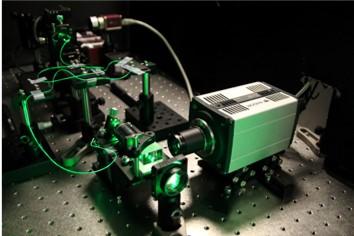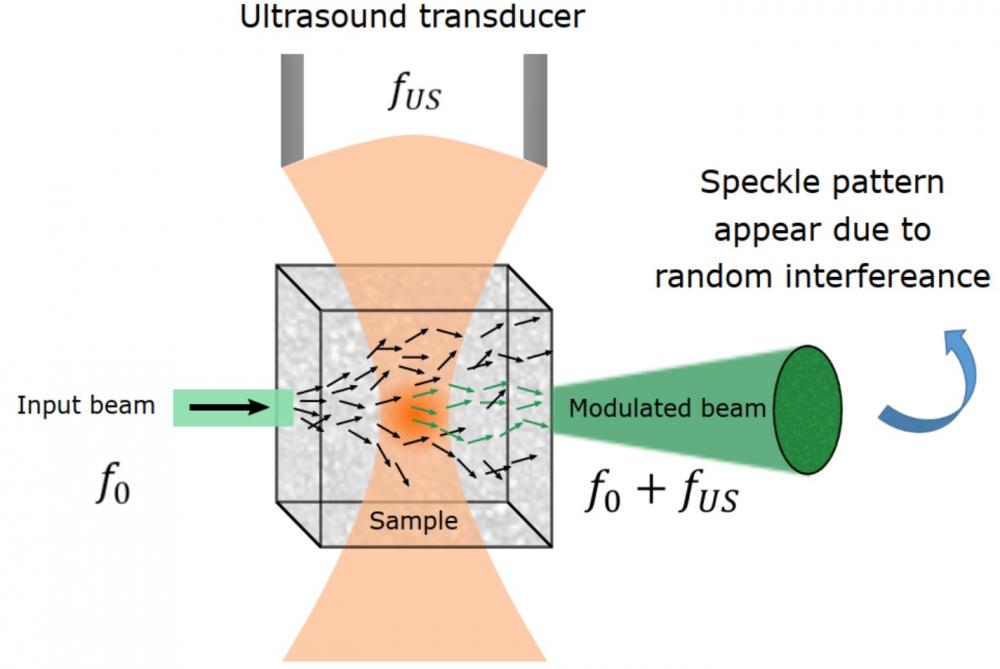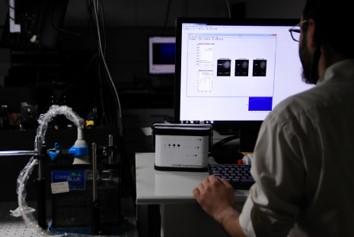Research
What do we do?
At the Advanced Imaging Lab, we develop innovative optics-based techniques that can look deep into opaque samples and even around corners. By combining controlled light, sound and advanced computational approaches, our methods go far beyond the capabilities of conventional cameras.
The research at our group operates at the intersection of physics and engineering, focusing on the development of cutting-edge, computational-based optical imaging techniques to surpass the limitations of existing methods. One significant challenge we address is the limitations imposed by light scattering on optical microscopy. Our methods defy some intuitive notions about randomly scattered light, such as the light reflected off walls, by demonstrating the possibility of using or extracting information from it for imaging purposes.
Why do we do it?
First, because everyone wants to have superman vision (or at least a CSI 'enhance' capability to 'zoom in on that reflection'). More seriously, almost any object that we see around us in not transparent. And it is not transparent not because it absorbs light but because of light scattering, which happens at any interface between two media. That's the reason why we cannot see objects that are hidden in dense fog or below our skin, even though the scattered light seems to pass through the obstacle, a problem of great practical importance in many fields.
Why should we succeed?
Excellent recent reviews
[1] Bertolotti, Jacopo, and Ori Katz. "Imaging in complex media." Nature Physics 18.9 (2022).
[2] Meinzer, Nina. "Complex optics." Nature Physics 18.9 (2022).
[3] S. Yoon et al. “Deep optical imaging within complex scattering media”, Nature Reviews Physics 2, 141 (2020).
[4] Z. Merali “Optics: Super vision”, Nature 518, 158 (2015).
[5] R. Horstmeyer et al. "Guidestar-assisted wavefront-shaping methods for focusing light into biological tissue", Nature Photonics 9, 563-571 (2015).
[6] A.P. Mosk et al. "Controlling waves in space and time for imaging and focusing in complex media", Nature Photonics 6, 283–292 (2012).
[7] D.S. Wiersma "Disordered Photonics", Nature Photonics 7, 188–196 (2013).
Resarch Topics
Optical imaging through scattering media
High-resolution imaging and light control through highly scattering media such as tissues and fog are fundamental problems that are important for a variety of applications, ranging from microscopy, through manipulation of cells and molecules, to astronomy. Read more!
Lensless Micro-endoscopy
Micro-endoscopes use optical fibers to obtain microscopic images deep inside the body while keeping the tissue damage as low as possible and requiring no electronics or cameras inside the body. We aim to improve a variety of methods for many applications: from clinical procedures, through biomedical investigations, all the way to in-vivo deep-tissue imaging. Read more!
Acousto-optic tomography
Acousto-optic imaging (AOI) enables optical-contrast imaging deep inside scattering samples via localized ultrasound-modulation of scattered light. We aim to surpass the acoustic diffraction limit and achieve high-resolution imaging at depths with standard AOT systems. Read more!
Photoacoustic/Optoacoustic imaging
Photoacoustic-tomography is a noninvasive imaging technique which combines light and sound, based on optical generation of ultrasound waves. We aim at developing approaches to overcome the two main limitations of photoacoustic imaging today: aberrations in complex samples and the limited spatial-resolution. Read more!
Resolution improvement in ultrasound imaging
We are trying to implement super-resolution methods, mostly from optical imaging, in ultrasound imaging modalities to overcome the system's acoustic diffraction limit. Read more!
Coherent perfect absorption
We develop a device that is capable of perfectly absorbing any light wavefront into a weakly absorbing material based on the phenomenon of coherent perfect absorption. Read more!







